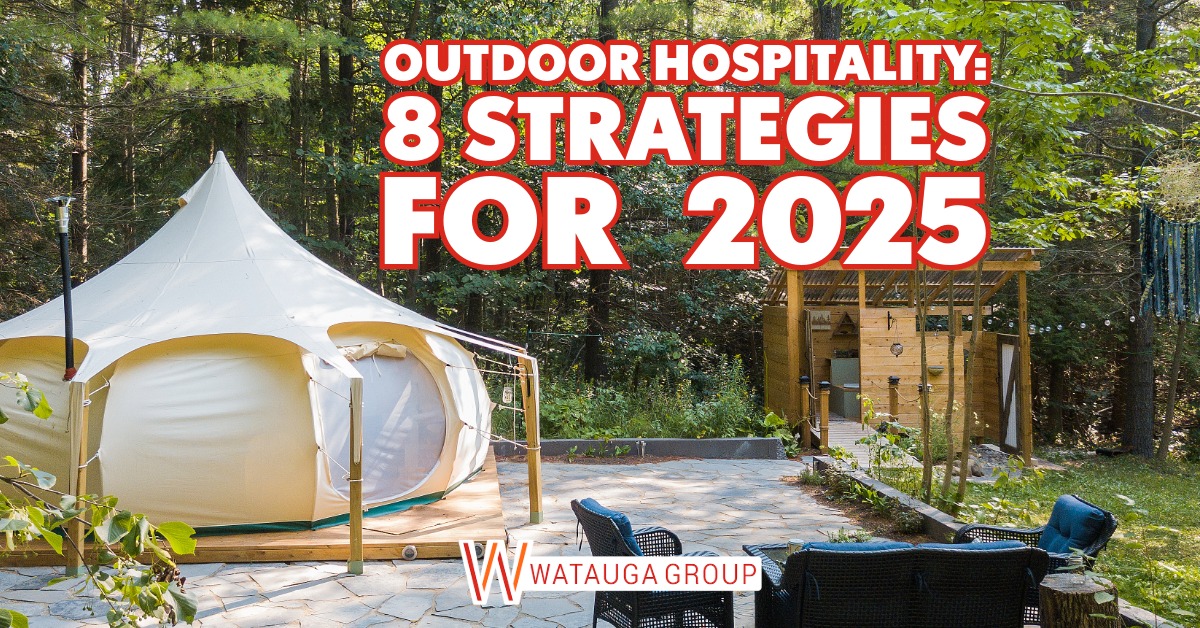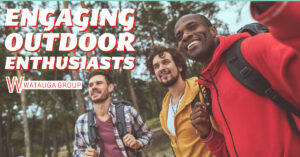Let’s be honest — the outdoor hospitality industry has undergone a complete transformation.
What worked five years ago is no longer cutting it. Your guests aren’t just looking for a place to pitch a tent or park an RV. They’re hunting for experiences that’ll make them forget their social media notifications exist, and frankly, they’re willing to pay premium prices for it.
And the numbers don’t lie.
The outdoor recreation economy generates $1.2 trillion in economic output, supporting over five million employees in the United States. Between 2012 and 2023, the outdoor recreation sector experienced a 37% growth (faster than the overall economy, which grew by 29%). This leap is not just growth, it’s a shift in how people want to spend their time and money.
Whether you’re a campground owner, glamping operator, or outdoor resort manager, you likely know these numbers too. The question isn’t whether the market is hot (it is), but how you’ll stand out in the crowd.
Let’s explore what’s working in 2025, covering eight strategies to achieve your outdoor hospitality marketing goals this year and beyond.
1. Virtual and Augmented Reality: Your New Secret Weapon
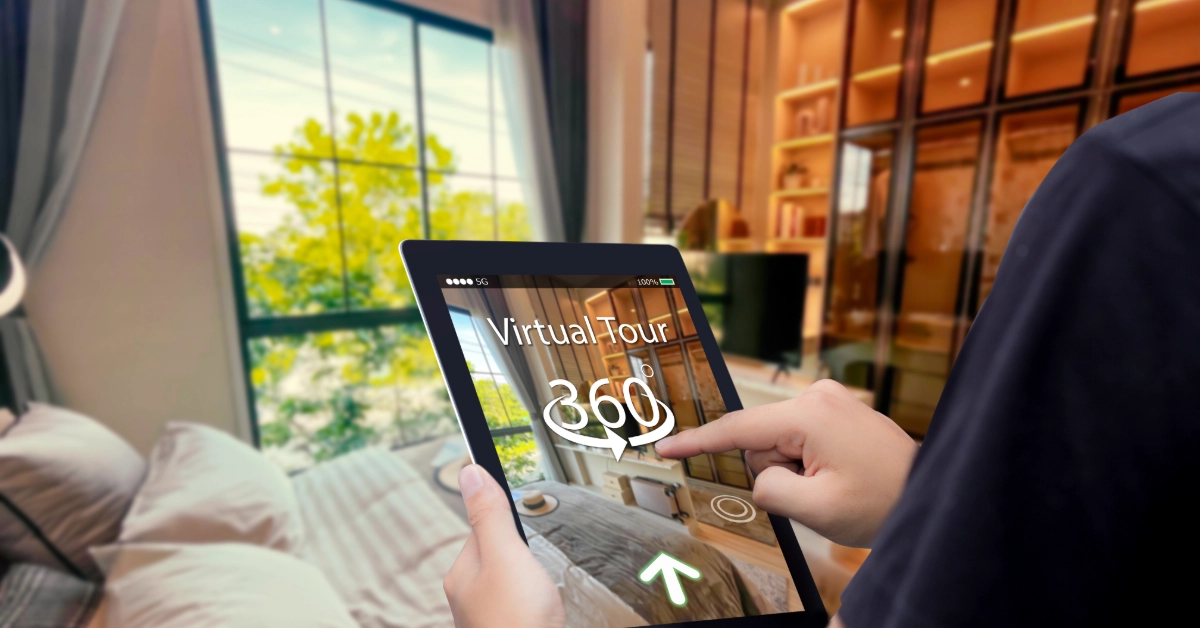
Remember when a few grainy photos on your website were enough?
Those days are over.
Virtual reality tours for outdoor hospitality are no longer just a nice-to-have — they’re essential for brands to stand out and achieve higher conversions. Virtual tourism is growing in popularity. The global market is expected to reach $30.54 billion by 2030 (up from $6.49 billion in 2023).
North America accounts for a market share of around 34%, with the United States holding a 70% share. Leveraging virtual reality (VR) tours makes sense when aiming to carve out a competitive edge.
Consider it from your guest’s point of view. They’re scrolling through dozens of properties, trying to determine if your “lakefront camping” actually means they can see the water from their site or if they’ll need binoculars. VR tours solve that problem instantly. You can transport potential guests to your property, let them walk the trails, see the sunrise from that perfect campsite, and gain a clear understanding of exactly what they’re buying.
While VR gets people to your property, augmented reality (AR) keeps them engaged once they’re there. Properties are creating interactive trail maps to help visitors identify local wildlife or overlay historical information about the area. Imagine your guests pointing their phones at a tree and learning it’s a 200-year-old oak, or scanning a trail marker to receive turn-by-turn directions to a hidden waterfall.
Create an Authentic Experience
Although VR and AR present plenty of opportunities, many property owners aren’t capitalizing on these strategies. They create overly polished tours that feel like real estate listings.
Instead, create a tour that captures the authentic atmosphere. What is it like to stand in your campground or resort? Showcase the sounds of morning birds, the crackle of campfires, and the genuine laughter of families. These VR tours aren’t about showcasing perfection. You want to help the prospective guest jump into the experience your property creates.
Read more: How To Use Virtual and Augmented Reality To Transform Travel Advertising
2. Storytelling That Actually Connects
When outdoor enthusiasts search for their next destination, they care about the story you’re telling and whether they can see themselves in it. Storytelling in outdoor hospitality marketing isn’t about crafting some fairy tale — it’s about understanding the deeper reasons people escape to nature and speaking directly to those motivations.
Instead of “Our campsites feature fire pits and picnic tables,” say something like…
“Picture this: you’re sitting around a crackling fire, marshmallows turning golden, while your kids chase fireflies and your phone stays buried in your backpack.”
Feel the difference?
Transformation storytelling is used not just to sell a place to stay — it sells the person your guests become when they’re there. The stressed executive who rediscovers their love of fresh air and morning coffee, free from emails. The family that actually talks to each other without screens mediating every conversation.
Let Your Guests Tell These Stories For You
User-generated content isn’t just free outdoor hospitality marketing; it’s a valuable asset.
When visitors post pictures and videos, it provides authentic proof that your property delivers on its promises. Create campaigns that encourage guests to share their transformation moments. Offer them specific hashtags, photo prompts, or even the option of disposable cameras to capture that authentic, unplugged feel.
The result?
A constant stream of genuine testimonials that speak directly to your next guest’s deepest desires.
3. Sustainability: Not Just a Trend, It’s Your Competitive Edge
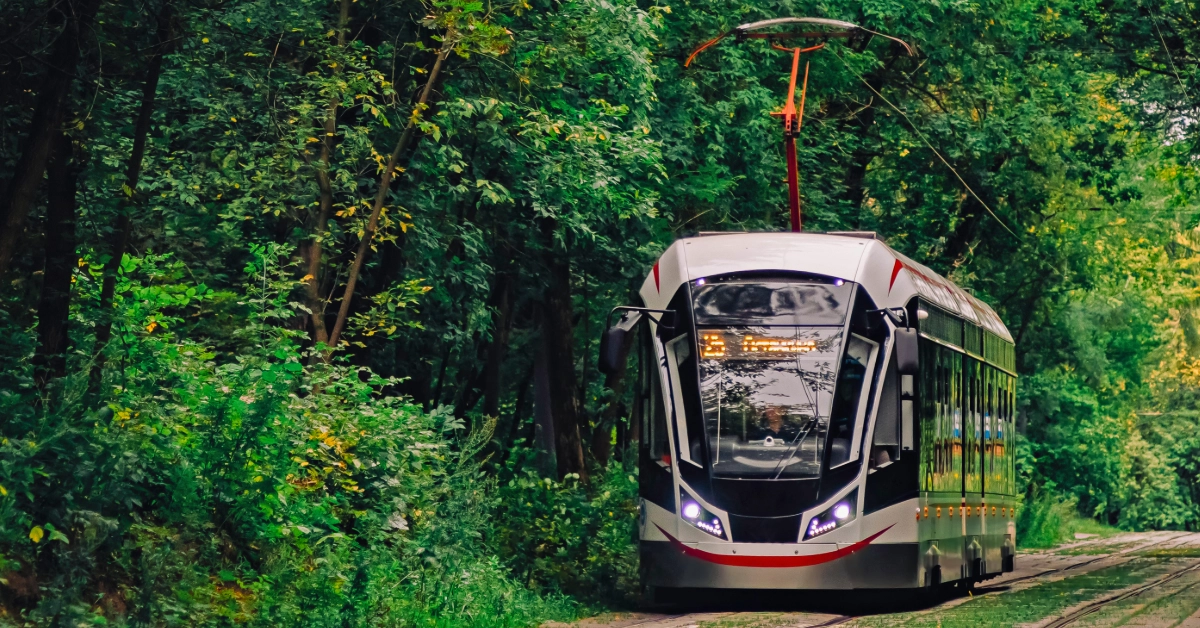
Did you know that 76% of people actively want to travel more sustainably?
However, properties are missing the mark on this opportunity. They treat sustainability like an item on a checklist instead of a core differentiator. Slapping a “we recycle” sign on your office door isn’t going to cut it with today’s environmentally conscious travelers. They want to see real commitment, measurable impact, and opportunities to participate in something meaningful.
Data shows a positive correlation between guest satisfaction and willingness to pay a premium price for green hotels. However, you must provide an authentic green experience. Your guests can spot greenwashing from a mile away.
Invest In Sustainable Outdoor Hospitality Marketing
Want to be recognized for your sustainability efforts? Showcase what makes you stand out as part of the adventure. It’s all in how you market the experience.
- Solar-powered campsites become “off-grid experiences that connect you with natural rhythms.”
- Composting programs become “opportunities to give back to the land that’s hosting you.”
- Water conservation becomes “mindful living that enhances your nature connection.”
The properties that truly excel in this area create eco-tourism experiences that guests can’t find anywhere else. Think guided conservation walks, hands-on habitat restoration projects, or workshops about sustainable outdoor practices. These aren’t just activities; they’re Instagram-worthy, shareable moments that align with your guests’ values and create lasting memories.
4. Influencer Partnerships: Beyond the Obvious
The influencer marketing landscape has matured, and thank goodness for that. The days of paying someone with a million followers to post a generic “amazing stay” photo are over.
Today’s successful influencer partnerships in outdoor hospitality are built on authenticity, alignment, and genuine storytelling.
Travelers trust influencer marketing reviews. However, they are now looking to micro-influencers with 1,000 to 100,000 followers, more than mega-influencers.
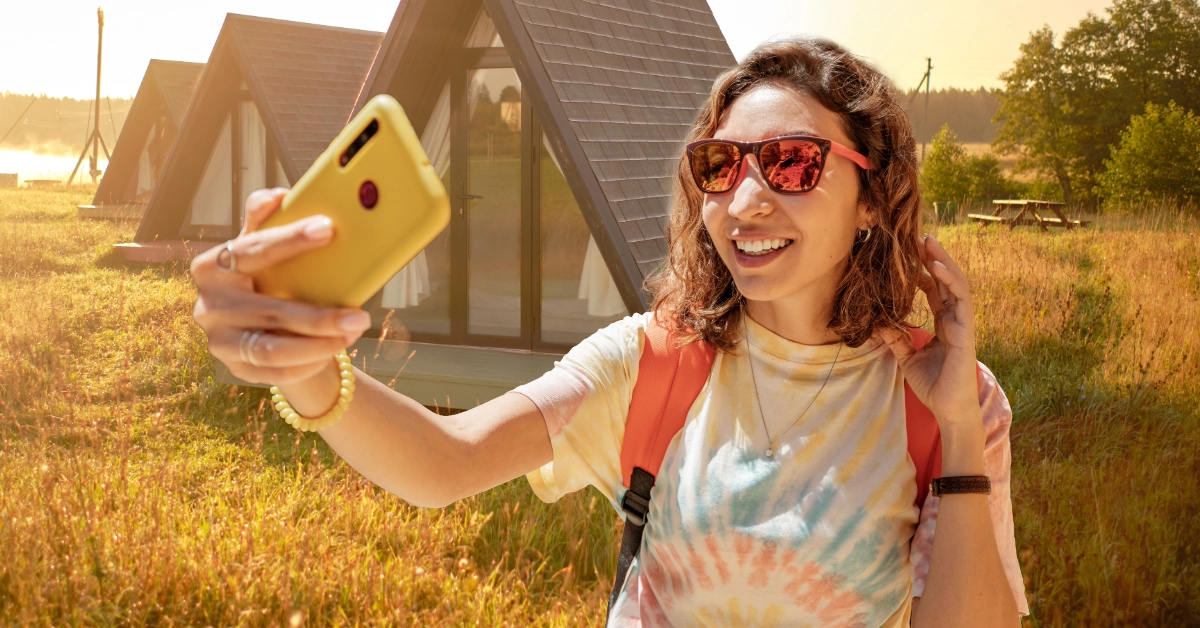
Why?
These smaller creators have built genuine communities around shared passions. Their experiences are authentic and driven by their lifestyle. In this case, influencers who immerse themselves in outdoor tourism.
Some of the most effective partnerships involve multi-day, authentic experiences where influencers document their entire journey — not just the highlight reel, but also the real stuff. This includes the early morning coffee prep, the challenge of setting up camp, and the genuine wonder of seeing stars without light pollution.
Consider Extended Partnerships
Successful outdoor hospitality marketing executives are taking this strategy to the next level: they’re creating influencer programs that extend beyond individual posts.
Think seasonal ambassadorships where outdoor enthusiasts become genuine advocates for your property. Or specialized partnerships with niche communities. For example, the van life crowd, glamping enthusiasts, and digital nomads who seek a better work-life balance.
The key is moving beyond transactional relationships to build genuine brand advocates who create content because they genuinely love what you offer, not just because you’re paying them.
5. Data-Driven Personalization: The Game Changer
Something that sets marketing leaders apart from followers is their ability to truly understand their guests, delivering personalized experiences that feel magical, not intrusive or creepy.
Properties utilizing artificial intelligence (AI) and predictive analytics can analyze guest behavior patterns, preferences, and booking histories to create marketing campaigns that feel personally tailored. But this isn’t about bombarding people with emails. Instead, you want to understand what drives different guest segments and tailor your approach accordingly.
For example, families booking during school breaks respond differently from couples seeking romantic getaways. Solo travelers have completely different motivations compared to corporate retreat planners. Your CRM system should track these patterns and automatically segment your communications.
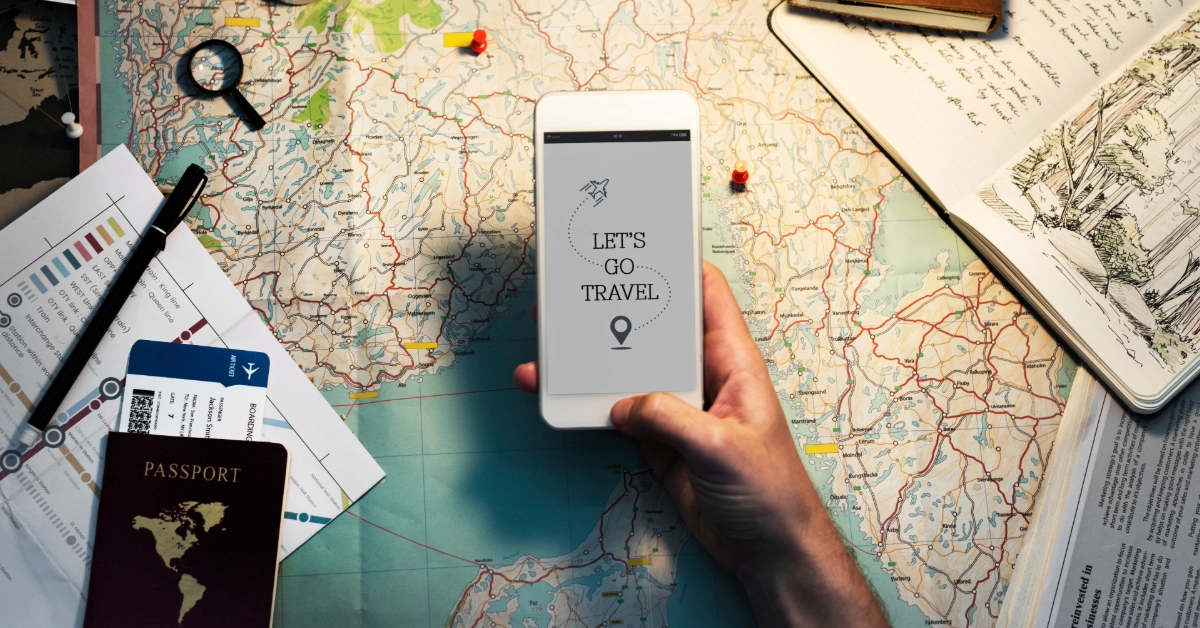
Use Data to Improve Marketing and the Guest Experience
The best outdoor hospitality properties are using data to personalize the entire guest experience, not just marketing tactics. Examples include:
Pre-arrival emails that suggest hiking trails based on previous guest activity levels.
Customized welcome packages that reflect dietary preferences.
Follow-up communications that reference specific experiences the guest enjoyed.
The goal isn’t to be Big Brother — it’s to be the thoughtful host who remembers that you prefer morning coffee over evening wine and suggests the perfect sunrise viewing spot.
6. Experiential Marketing: Creating Unforgettable Moments
The most successful outdoor hospitality properties don’t just provide accommodations; they offer a unique experience. The top outdoor tourism destinations curate experiences that guests can’t get anywhere else.
The KOA Annual Camping Report reveals that guests are increasingly willing to pay premium prices for unique, memorable activities. However, these experiences don’t have to be expensive or elaborate. They just need to be authentic and impossible to replicate at home.
Think:
- Stargazing workshops with local astronomers who can point out constellations while sharing ancient stories.
- Foraging expeditions led by area experts who teach guests to identify edible plants and sustainable harvesting practices.
- Photography workshops that help guests capture the perfect golden hour shot while learning about natural composition.
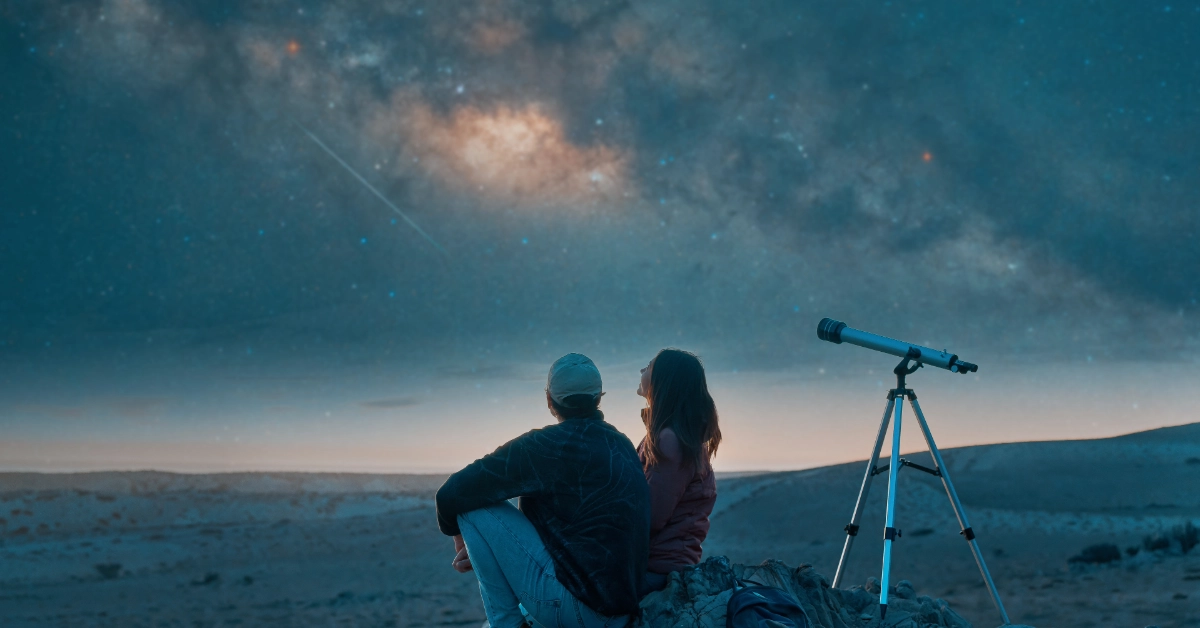
Authentic Alignment Matters
The magic happens when the experiences you offer align with your property’s unique characteristics. With an experience-driven approach, focus on what makes your property special.
- A lakefront property might offer sunrise paddleboard yoga.
- A mountain location could provide guided meditation sessions at scenic overlooks.
- A desert property might specialize in night photography workshops.
These experiential offerings do more than create happy guests. When you get this strategy right, you can generate premium pricing opportunities, extend average stay length, and create organic marketing content that money can’t buy.
7. Visual Storytelling: Show, Don’t Tell
In outdoor hospitality, your visuals aren’t just marketing materials. What prospective guests see is the primary factor in their decision-making process. For example, properties utilizing high-quality aerial imagery may experience higher engagement rates on booking platforms. However, they need to show the right visuals.
Instead of focusing on what you have on the property, show what guests will experience. Drone photography isn’t just about capturing your property from above — it’s about showing the relationship between your accommodations and the natural world around them.
Capture Moments and Share
The most effective visual storytelling captures moments of genuine experience. Time-lapse videos of sunrises over campsites, footage of families gathered around evening fires, and the peaceful silence of early morning mist over a lake are all examples. These aren’t just pretty pictures. They act as emotional triggers that help potential guests visualize their own transformation.
Video content has become crucial, but it doesn’t need to be of Hollywood-level production quality. Some of the most effective outdoor hospitality videos are simple and authentic, capturing real guest experiences. The key is consistency in quality and authenticity in emotion.
Additionally, experiment with various strategies and channels tailored to your audience. For some, that might mean experimenting with something completely new, like TikTok.
8. The Path Forward: Integration, Not Isolation
Lastly, these strategies aren’t separate tactics that you implement one at a time. The properties that are dominating the outdoor hospitality market are integrating these approaches. They are creating cohesive, authentic brand experiences that ultimately sell themselves.
Consistent Messaging Is Key
Your VR tours should tell the same story as your influencer partnerships. Your sustainability initiatives should align with your experiential offerings. Your data-driven personalization should feel as natural as a conversation with a knowledgeable local guide.
Ready to Implement Winning Outdoor Hospitality Marketing Strategies?
The outdoor hospitality industry is at an inflection point. The properties that embrace these innovative marketing techniques while staying true to the authentic outdoor experience their guests crave will thrive. Those who stick to outdated approaches will struggle to compete.
The choice is yours. But remember, your guests are already living in the future. The question is whether your marketing will meet them where they are.

